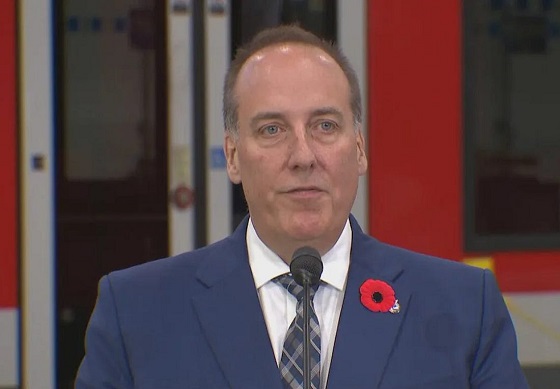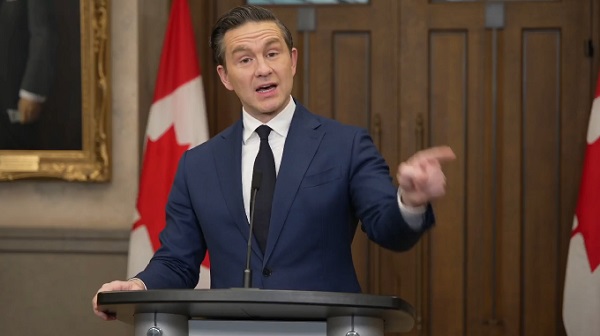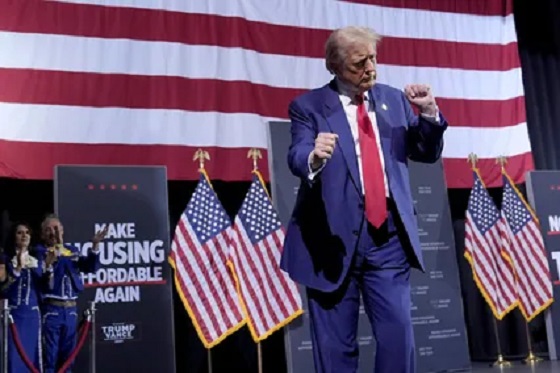Uncategorized
Trump’s border visit comes as shutdown talks fall apart

WASHINGTON — President Donald Trump is taking the shutdown battle to the U.S.-Mexico border, seeking to bolster his case for the border wall after negotiations with Democrats blew up over his funding demands.
Trump stalked out of his meeting with congressional leaders — “I said bye-bye,” he tweeted soon after — as efforts to end the partial government shutdown fell into deeper disarray. Hundreds of thousands of federal workers now face lost paychecks on Friday.
During his stop Thursday in McAllen, Texas, Trump will visit a border patrol station for a roundtable on immigration and border security, and will get a security briefing on the border. But Trump has expressed his own doubts that his appearance and remarks will change any minds, as he seeks $5.7 billion for the wall that has been his signature promise since his presidential campaign.
McAllen is located in the Rio Grande Valley, the busiest part of the border for illegal border crossings.
The unraveling talks prompted further speculation about whether Trump would declare a national emergency and try to authorize the wall on his own if Congress won’t approve the money he’s seeking.
“I think we might work a deal, and if we don’t I might go that route,” he said.
The White House meeting in the Situation Room ended after just 14 minutes. Democrats said they asked Trump to re-open the government but that he told them if he did they wouldn’t give him money for the wall. Republicans said Trump posed a direct question to House Speaker Nancy Pelosi: If he opened the government, would she fund the wall? She said no.
Senate Democratic leader Chuck Schumer said Trump slammed his hand on the table. However, Republicans said Trump, who handed out candy at the start of the meeting, did not raise his voice and there was no table pounding.
One result was certain: The shutdown plunged into new territory with no endgame in sight. The Democrats see the idea of the long, impenetrable wall as ineffective and even immoral. Trump sees it as an absolute necessity to stop what he calls a crisis of illegal immigration, drug-smuggling and human trafficking at the border.
Trump headed to Capitol Hill earlier Wednesday, seeking to soothe jittery Republican lawmakers. He left a Republican lunch boasting of “a very, very unified party,” but GOP senators have been publicly uneasy as the standoff ripples across the lives of Americans and interrupts the economy.
During the lunch, Trump discussed the possibility of a sweeping immigration compromise with Democrats to protect some immigrants from deportation but provided no clear strategy or timeline for resolving the standoff, according to senators in the private session.
GOP unity was tested further when the House passed a bipartisan spending bill, 240-188, to reopen one shuttered department, Treasury, to ensure that tax refunds and other financial services continue. Eight Republicans joined Democrats in voting, defying the plea to stick with the White House.
There was growing concern about the toll the shutdown is taking on everyday Americans, including disruptions in payments to farmers and trouble for home buyers who are seeking government-backed mortgage loans — “serious stuff,” according to Sen. John Thune of South Dakota, the No. 2 Senate Republican.
Some Republicans were concerned about the administration’s talk of possibly declaring a national emergency at the border, seeing that as an unprecedented claim on the right of Congress to allocate funding except in the most dire circumstances.
“I prefer that we get this resolved the old-fashioned way,” Thune said.
Democrats said before the White House meeting that they would ask Trump to accept an earlier bipartisan bill that had money for border security but not the wall. Pelosi warned that the effects of hundreds of thousands of lost paychecks would begin to have an impact across the economy.
“The president could end the Trump shutdown and re-open the government today, and he should,” Pelosi said.
Tuesday night, speaking to the nation from the Oval Office for the first time, Trump argued that the wall was needed to resolve a security and humanitarian “crisis.” He blamed illegal immigration for what he said was a scourge of drugs and violence in the U.S. and asked: “How much more American blood must we shed before Congress does its job?”
Democrats in response accused Trump appealing to “fear, not facts” and manufacturing a border crisis for political gain.
In an off-the-record lunch with television anchors ahead of his speech, Trump suggested his aides had pushed him to give the address and travel to the border and that he personally did not believe either would make a difference, according to two people familiar with the meeting. But one person said it was unclear whether Trump was serious or joking. The people familiar with the meeting insisted on anonymity because they were not authorized to discuss the meeting publicly.
___
Associated Press writers Jill Colvin, Colleen Long, Alan Fram and Deb Riechmann contributed to this report.
For AP’s complete coverage of the U.S. government shutdown: https://apnews.com/GovernmentShutdown
Catherine Lucey, Lisa Mascaro And Laurie Kellman, The Associated Press
Uncategorized
Trump Admin Establishing Council To Make Buildings Beautiful Again


From the Daily Caller News Foundation
By Jason Hopkins
The Trump administration is creating a first-of-its-kind task force aimed at ushering in a new “Golden Age” of beautiful infrastructure across the U.S.
The Department of Transportation (DOT) will announce the establishment of the Beautifying Transportation Infrastructure Council (BTIC) on Thursday, the Daily Caller News Foundation exclusively learned. The BTIC seeks to advise Transportation Secretary Sean Duffy on design and policy ideas for key infrastructure projects, including highways, bridges and transit hubs.
“What happened to our country’s proud tradition of building great, big, beautiful things?” Duffy said in a statement shared with the DCNF. “It’s time the design for America’s latest infrastructure projects reflects our nation’s strength, pride, and promise.”
“We’re engaging the best and brightest minds in architectural design and engineering to make beautiful structures that move you and bring about a new Golden Age of Transportation,” Duffy continued.
Mini scoop – here is the DOT’s rollout of its Beautifying Transportation Infrastructure Council, which will be tasked with making our buildings beautiful again. pic.twitter.com/
9iV2xSxdJM — Jason Hopkins (@jasonhopkinsdc) October 23, 2025
The DOT is encouraging nominations of the country’s best architects, urban planners, artists and others to serve on the council, according to the department. While ensuring that efficiency and safety remain a top priority, the BTIC will provide guidance on projects that “enhance” public areas and develop aesthetic performance metrics.
The new council aligns with an executive order signed by President Donald Trump in August 2025 regarding infrastructure. The “Making Federal Architecture Beautiful Again” order calls for federal public buildings in the country to “respect regional architectural heritage” and aims to prevent federal construction projects from using modernist and brutalist architecture styles, instead returning to a classical style.
“The Founders, in line with great societies before them, attached great importance to Federal civic architecture,” Trump’s order stated. “They wanted America’s public buildings to inspire the American people and encourage civic virtue.”
“President George Washington and Secretary of State Thomas Jefferson consciously modeled the most important buildings in Washington, D.C., on the classical architecture of ancient Athens and Rome,” the order continued. “Because of their proven ability to meet these requirements, classical and traditional architecture are preferred modes of architectural design.”
The DOT invested millions in major infrastructure projects since Trump’s return to the White House. Duffy announced in August a $43 million transformation initiative of the New York Penn Station in New York City and in September unveiledmajor progress in the rehabilitation and modernization of Washington Union Station in Washington, D.C.
The BTIC will comprise up to 11 members who will serve two-year terms, with the chance to be reappointed, according to the DOT. The task force will meet biannually. The deadline for nominations will end Nov. 21.
Uncategorized
New report warns WHO health rules erode Canada’s democracy and Charter rights

The Justice Centre for Constitutional Freedoms has released a new report titled Canada’s Surrender of Sovereignty: New WHO health regulations undermine Canadian democracy and Charter freedoms. Authored by Nigel Hannaford, a veteran journalist and researcher, the report warns that Canada’s acceptance of the World Health Organization’s (WHO) revised International Health Regulations (IHR) represents a serious erosion of national independence and democratic accountability.
The IHR amendments, which took effect on September 19, 2025, authorize the WHO Director-General to declare global “health emergencies” that could require Canada to follow directives from bureaucrats in Geneva, bypassing the House of Commons and the will of Canadian voters.
The WHO regards these regulations as “binding,” despite having no ability or legal authority to impose such regulations. Even so, Canada is opting to accept the regulations as binding.
By accepting the WHO’s revised IHR, the report explains, Canada has relinquished its own control over future health crises and instead has agreed to let the WHO determine when a “pandemic emergency” exists and what Canada must do to respond to it, after which Canada must report back to the WHO.
In fact, under these International Health Regulations, the WHO could demand countries like Canada impose stringent freedom-violating health policies, such as lockdowns, vaccine mandates, or travel restrictions without debate, evidence review, or public accountability, the report explains.
Once the WHO declares a “Pandemic Emergency,” member states are obligated to implement such emergency measures “without delay” for a minimum of three months.
Importantly, following these WHO directives would undermine government accountability as politicians may hide behind international “commitments” to justify their actions as “simply following international rules,” the report warns.
Canada should instead withdraw from the revised IHR, following the example of countries like Germany, Austria, Italy, Czech Republic, and the United States. The report recommends continued international cooperation without surrendering control over domestic health policies.
Constitutional lawyer Allison Pejovic said, “[b]y treating WHO edicts as binding, the federal government has effectively placed Canadian sovereignty on loan to an unelected international body.”
“Such directives, if enforced, would likely violate Canadians’ Charter rights and freedoms,” she added.
Mr. Hannaford agreed, saying, “Canada’s health policies must be made in Canada. No free and democratic nation should outsource its emergency powers to unelected bureaucrats in Geneva.”
The Justice Centre urges Canadians to contact their Members of Parliament and demand they support withdrawing from the revised IHR to restore Canadian sovereignty and reject blind compliance with WHO directives.
-

 Business2 days ago
Business2 days agoWill Paramount turn the tide of legacy media and entertainment?
-

 Alberta2 days ago
Alberta2 days agoFederal budget: It’s not easy being green
-

 Health23 hours ago
Health23 hours agoLack of adequate health care pushing Canadians toward assisted suicide
-

 National15 hours ago
National15 hours agoWatchdog Demands Answers as MP Chris d’Entremont Crosses Floor
-

 Alberta14 hours ago
Alberta14 hours agoATA Collect $72 Million in Dues But Couldn’t Pay Striking Teachers a Dime
-

 Artificial Intelligence14 hours ago
Artificial Intelligence14 hours agoAI seems fairly impressed by Pierre Poilievre’s ability to communicate
-

 Energy2 days ago
Energy2 days agoA picture is worth a thousand spreadsheets
-

 Energy2 days ago
Energy2 days agoIt should not take a crisis for Canada to develop the resources that make people and communities thrive.









